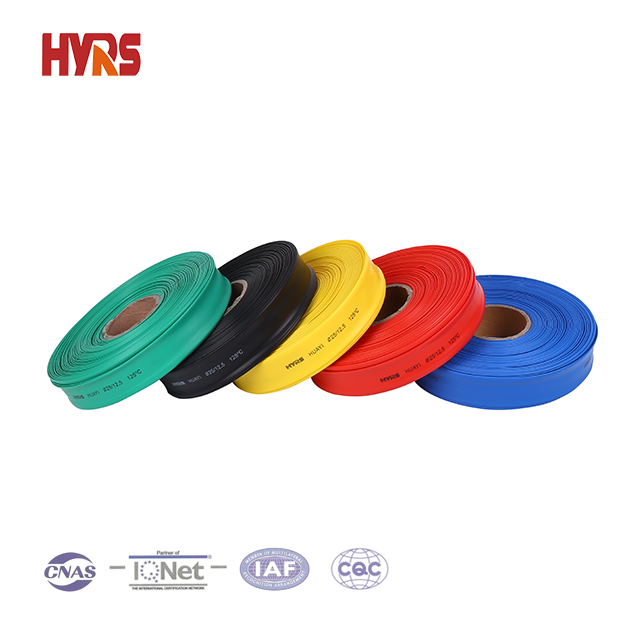Finding the Perfect Fit: Navigating the World of Sizes in Low Voltage Heat Shrinkable Tubes
2024-01-22
Introduction:
In the intricate landscape of cable management and electrical insulation, the availability of different sizes in low voltage heat shrinkable tubes is a key consideration. Choosing the appropriate size for a specific application is crucial to ensure a snug fit, optimal performance, and long-term reliability. In this blog post, we will explore the range of sizes available for these tubes and provide insights on how to navigate the selection process for various applications.
1. Understanding Size Options:
- Sizes Range: Low voltage heat shrinkable tubes come in a variety of sizes, ranging from fractions of an inch to several inches in diameter. The selection of sizes caters to the diverse dimensions of wires, cables, and components in electrical systems.
2. Diameter Selection:
- Measured Diameter: The size of heat shrinkable tubes is typically specified by its nominal or measured diameter. This represents the diameter of the tube in its expanded state before shrinking. Common diameter sizes include 1/16", 1/8", 1/4", 3/8", and so on.
- Consideration: When selecting a size, it's crucial to consider the diameter of the cable or component to be covered. The chosen tube should have a nominal diameter that accommodates the size of the cable or component with some allowance for a snug fit.
3. Shrink Ratio:
- Understanding Shrink Ratio: Heat shrinkable tubes are often labeled with a shrink ratio, indicating how much the tube will shrink in relation to its expanded state. Common shrink ratios include 2:1, 3:1, and 4:1.
- Impact on Size Selection: The shrink ratio influences the final size of the tube after heat application. Higher shrink ratios result in greater contraction, which can be advantageous for covering irregularly shaped objects or multiple wires.
4. Length Options:
- Customizable Lengths: While the primary consideration is the diameter, heat shrinkable tubes are also available in various lengths. Some are supplied in pre-cut lengths, while others come in continuous spools, allowing users to cut customized lengths as needed.
- Tailoring to Application: Consider the length requirements for the specific application. Ensure that the tube is long enough to cover the intended area while allowing for proper shrinking.
Choosing the Appropriate Size:
1. Measure the Cable or Component:
- Accurate Measurements: Use precise measurements of the cable, wire, or component that needs to be covered. Measure the outer diameter of the widest part to determine the appropriate size.
2. Consider Shrink Ratio:
- Evaluate Shrink Ratio: Take into account the shrink ratio of the tube. If a higher shrink ratio is needed for a tight fit, consider selecting a tube with a ratio that suits the application.
3. Allowance for Contraction:
- Factor in Shrinkage: Keep in mind that the tube will shrink during the heat application process. Allow for this contraction to ensure a snug fit without compromising coverage.
4. Application-Specific Requirements:
- Tailor to the Environment: Consider the specific requirements of the application. For example, if the tube needs to cover connectors or splices, choose a size that accommodates these elements while providing sufficient insulation.
5. Consult Manufacturer Guidelines:
- Manufacturer Recommendations: Manufacturers often provide guidelines and charts to help users select the appropriate size based on cable diameter, shrink ratio, and application. Consult these recommendations for accurate size selection.
6. Testing and Prototyping:
- Trial Applications: In cases of uncertainty, conduct trial applications or prototypes using different sizes. This allows for practical assessment and ensures that the chosen size meets the specific needs of the application.
Conclusion:
Navigating the world of sizes in low voltage heat shrinkable tubes is a crucial aspect of ensuring the effectiveness and reliability of electrical insulation and cable protection. Whether covering wires, splices, connectors, or components, selecting the appropriate size involves careful consideration of diameter, shrink ratio, and application-specific requirements. As guardians of cables and components, these tubes exemplify the importance of finding the perfect fit to enhance safety, organization, and the longevity of electrical systems.



